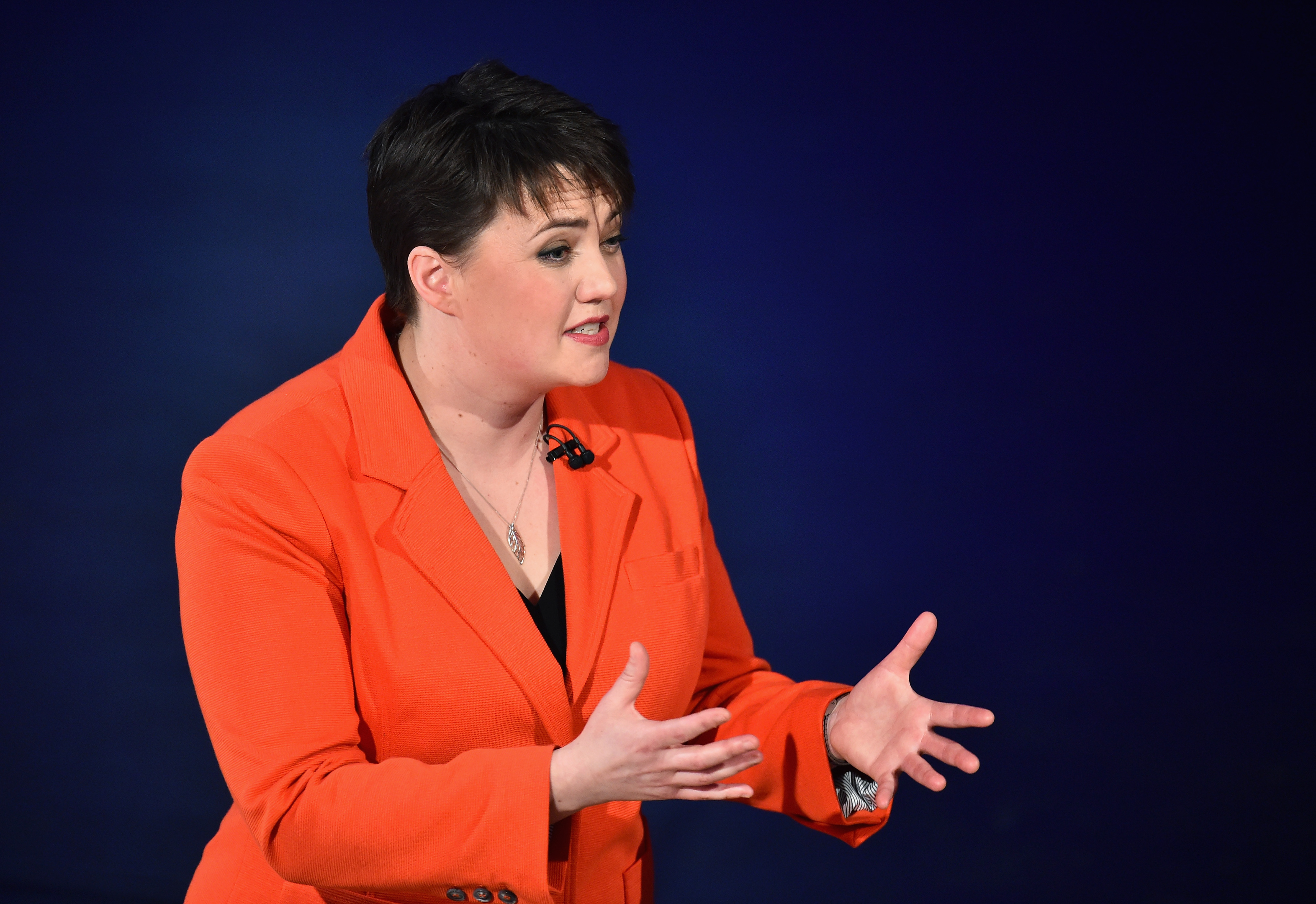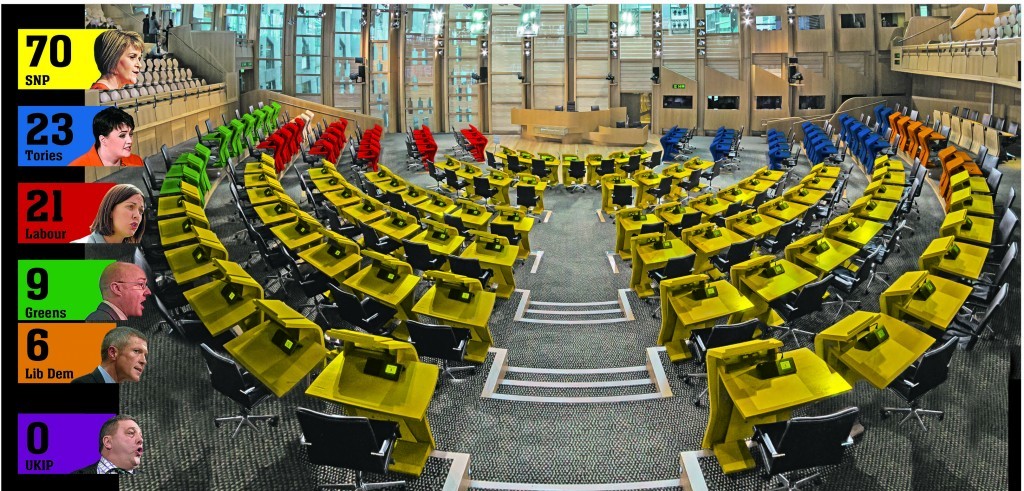
The Sunday Post has teamed up with the only team to correctly predict the outcome of last year’s General Election to work out the most likely outcome at Thursday’s crunch vote.
The hi-tech study, which involved analysing huge amounts of Google search data and published opinion polls, also shows Nicola Sturgeon’s SNP will win a second majority Holyrood government with a record number of seats.
Second place will go to the Tories according to the study, though the battle is incredibly close with Scottish Labour.
The full research results – when fed into a Holyrood seat projector – has the SNP on 70 seats, one more than in 2011.
Labour would be on 21, a total of 16 down from 2011, and the Tories would be on 23, up eight from the last election.
The Lib Dems would gain one seat from 2011, taking them to six and the Greens would jump to nine seats from two.
Professor Ronald MacDonald, an economist at Glasgow University, said: “Our results show that since the General Election, the SNP have consolidated their status in the Scottish political landscape with the clear potential to attract voters from other parties.
“This is reflected in the projection that they can get more than one half of the constituency votes. However, in terms of our regional votes the SNP faces more competition from the other parties.”

Professor MacDonald added: “There still seems to be a Scottish independence referendum effect that continues to boost the SNP’s vote and harms that of Labour.
“The results show that Labour can gain votes due to its position on austerity but we find that their other policies, including their flagship policy of increasing the highest tax rate band to 50p, have no effect in terms of the constituency vote case and they do badly in nearly all other topic areas in the regional vote case.
“In our analysis of the General Election we found evidence that Labour could have attracted tactical votes away from the SNP, but it were unable to do so.
“In terms of the current Scottish election we find no evidence that Labour are able exploit tactical voting to improve its election performance.
“Our model shows that both the Greens and UKIP have a strong showing in the ability to attract votes from other parties, so if they get their campaigning right in the last days they could well improve their position over what we have here.”
Analysing live data on Google searches combined with commercial polling figures, Professor MacDonald and his colleague Dr Xuxin Mao predicted the Yes vote in the independence referendum would hit 45% – five days before the actual result.
Again, for last year’s General Election the academics ran their model the weekend before polling day and predicted the Conservatives average share of seats would be 318, but within a range of 306 and 331. The Tories eventually bagged 331 seats, returning a majority government.
On the strength of this, The Sunday Post asked the academics to carry out the same exercise for Thursday’s Holyrood election.
The results show the SNP are projected to get 51.9% of the constituency vote, within a range of 51.2% and 52.6%. Labour are projected to get 19.2%, within a range of 18.6% and 19.7%, and the Tories are likely to get 18% (within a range of 17.6% and 18.4%) with the Lib Dems on an average share of 6.4%.
In the regional list vote the SNP are projected to get 44.6%, within a range of 43.9% and 45.4%. Labour are predicted to get 18.1%, within a range of 17.5% and 18.7%. The Tories are expected to get an average of 18.7% in the list vote, though the research says this is within a range of 17.9% and 19.5%. The Lib Dems are predicted to get an average of 6% on the list vote, while the Greens are predicted to bank 9.4% support.
SNP campaign director and Deputy First Minister John Swinney said: “Thursday’s vote is about who is most able to deliver for everyone who lives and works here.
“Only the SNP have the unity, the ideas and the leadership to keep Scotland moving forward. Only by casting both votes SNP can people be sure to re-elect Nicola Sturgeon First Minister.”
The list of key words used for internet searches included terms such as ‘tax’, ‘cuts’, and the ‘independence referendum’ still matter for the parties. The party with the fewest key words associated with it for searches was Scottish Labour, which Professor MacDonald suggested meant Labour had failed to “reach and enthuse voters”.
Issues such as the EU referendum and immigration were low down the list of priority searches for voters.
A Scottish Conservatives spokesman said: “This is an encouraging finding and we will be working harder than ever over the last four days of this campaign to show we are up for the job.
“A vote for Ruth Davidson at this election is a vote to get a strong opposition which will really hold the SNP to account.”
A Scottish Labour spokesman said: “We set out to use the powers of the Scottish Parliament to tax the richest 1%, invest in our schools and stop the cuts to public services.
“We are being honest about our plan, unlike the SNP and the Tories.”
READ MORE
Poll reveals voters think Ruth Davidson ‘would be a better opposition leader’ than Kezia Dugdale
Exclusive: Pensioner power to sink Labour in Scottish elections

Enjoy the convenience of having The Sunday Post delivered as a digital ePaper straight to your smartphone, tablet or computer.
Subscribe for only £5.49 a month and enjoy all the benefits of the printed paper as a digital replica.
Subscribe